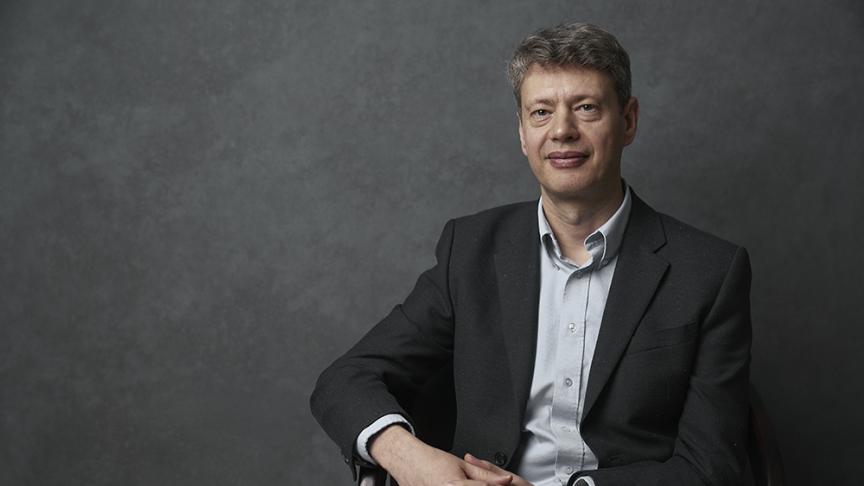Attention to detail

BY Sara Laux
May 9, 2018
Gianluigi Botton’s interest in engineering was probably the result of “playing with Legos when I was little,” but it’s microscopy that has shaped his career. He has been focused on it ever since he got a summer job in electron microscopy at Simon Fraser University during Expo ’86, through his PhD and positions at Cambridge and Natural Resources Canada, and at McMaster, where he has been since 2001.
Botton is now the Canada Research Chair (Tier 1) of Electron Microscopy of Nanoscale Materials as well as the founder and director of the Canadian Centre for Electron Microscopy, which opened in 2008 and is now an internationally regarded centre for electron microscopy – the only one of its kind in Canada.
“Even at the academic level, there’s no centre of the same magnitude internationally,” says Botton. “Some facilities have one high-end microscope or focus on one microscopy technique, but here we have a collection of instruments from high-resolution scanning microscopes to our atom probe. That means we have an incredible breadth of capabilities that allow us a broader scope of characterizations, which then leads to understanding materials from more perspectives and in better detail.
“Our lab is the envy of universities around the world.”
The centre hosts researchers from 37 universities from Canada and around the world, as well as industrial world-class facilities like IBM Research in Zurich, working in areas that extend from the fundamentals of materials physics to nanomedicine to metallurgy.
Botton’s research group has been instrumental in helping understand the structure of materials right down to the atomic level, with a number of projects on the go, largely in collaboration with other researchers.
For example, they’re working with chemistry professor Gillian Goward and General Motors to better understand battery materials and how they evolve during the cycling process. They’ve worked on fuel cell technology with Ballard Power, the world’s leading provider of clean energy and fuel cells. And they’re working with the Canadian Nuclear Laboratory in Chalk River on understanding the evolution and degradation of alloys used in nuclear power plants.
Because of their work and the work of their partners, nuclear facilities are safer, batteries last longer and cars are lighter and more fuel-efficient.
“What we do is very portable to many applications,” explains Botton. “Collaboration is important because it allows us to continuously learn new things with other world class experts. The help we get from other people allows us to contribute to areas where we wouldn’t otherwise work, and we can help our partners do the same.”
That inclusive spirit extends to Botton’s research group as well, where he makes an effort to include diverse perspectives. In a field that is still dominated by men – approximately 80 per cent of engineering PhD students in Ontario are male – he tries to maintain a 50-50 ratio of female to male students and has managed to do so over his time at McMaster. And he tries to foster relationships, both collegial and friendly, between domestic and international students.
“Having an equal number of male and female graduate students and postdocs is not easy to do all the time, but I do try to keep that balance over the years,” he says. “I also try to have a diversity of backgrounds and cultures as well. Students gain a lot more when they learn from other cultures – it’s good experience not just for research, but for life.”
This article is part of a series of profiles celebrating the 60th anniversary of McMaster’s Faculty of Engineering. For more Big Ideas stories, go to the faculty’s website.


